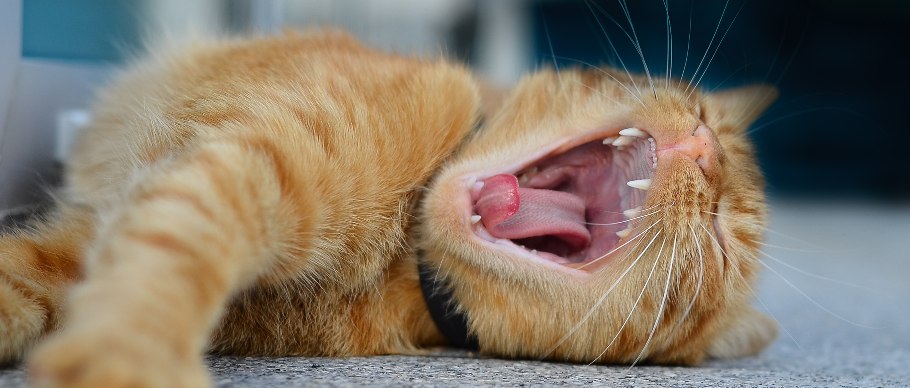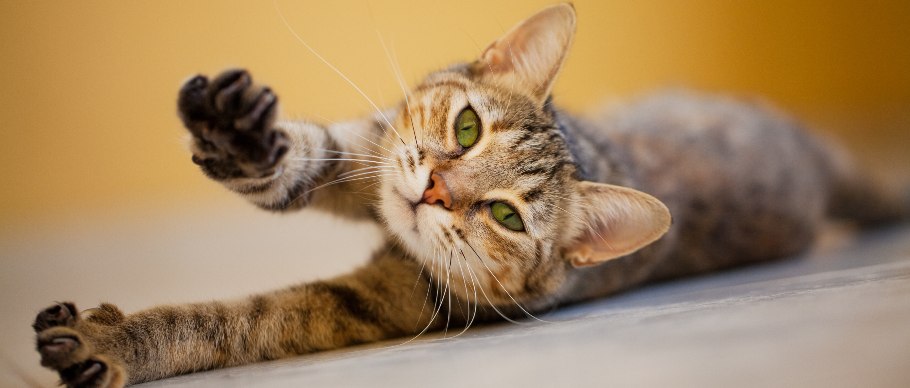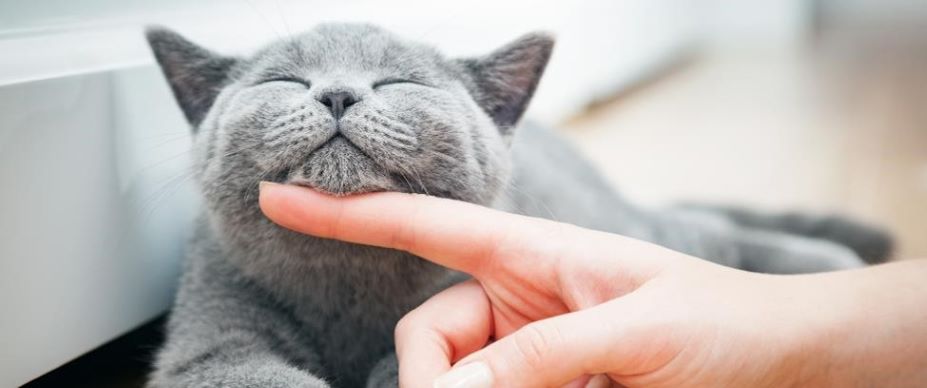Cat Care 101: 8 Tips for A Happy and Healthy Kitty
There’s so much to love about cats: they’re cute, clever, and charismatic furry friends. And as pet parents, it’s our job to help maintain their wellbeing so they can stay happy and healthy. After all, when our kitties thrive, we do too!
While there are many ins and outs of cat care, we highlighted eight important ways to promote your best friend’s wellness in between visits to the veterinarian.
#1 Feeding a Cat
Selecting a high-quality cat food will ensure your cat enjoys a well-balanced diet and receives optimal nutrients. Your feline friend’s diet and food intake requirements depend on their health, activity level, and age, so consult your veterinarian to discover the best choice for your cat. Keep in mind that treats should only make up about 5 to 10 percent of your kitty’s diet, according to the ASPCA.
And of course, be sure to fill your cat’s water bowl daily so they stay hydrated; a general rule is that cats need between 3.5 to 4.5 ounces of water per every 5 pounds of their body weight a day, according to Preventive Vet.

#2 Choosing Cat Supplements
A proper diet for your cat’s age and lifestyle typically offers many of the essential nutrients required. However, supplements can help promote specific aspects of your cat’s wellbeing, especially those where felines commonly need added support, such as urinary tract or digestive health. Every furry friend has their own, unique needs, so consult your veterinarian when considering cat supplements.
For instance, while cat multi-vitamins may help support overall health, supplements with cranberry extract may help maintain a healthy urinary tract. To help aid in supporting upper respiratory health, cats can benefit from a supplement containing L-lysine. Additionally, a pre & probiotic supplement for cats may help keep their gut health in check and regulate their immune system.
Learn more about the benefits of pet supplements and what they do.

#3 Maintaining Cat Dental Care
Like humans, cats develop plaque and tartar on their teeth. Therefore, it is important to establish a cat dental routine to keep their smiles healthy! Along with preventing bad breath, regular dental care helps avoid future problems down the line such as periodontal disease, according to PetMD. When cleaning your furry friend’s teeth, be sure to use a cat toothbrush—which is specially designed with an angled head that’s easier to maneuver in your kitty’s tiny mouth—and a cat toothpaste to ensure the ingredients are safe for felines.
It is recommended to brush your cat’s teeth daily, but if that is not attainable, aim for a minimum of three times per week, according to the VCA. You can also consult your veterinarian about a professional teeth cleaning for additional cat dental care!

#4 Grooming a Cat
Cats are self-groomers, but contrary to popular belief, they should also be groomed by you—the pet parent. Regular brushing removes loose hair and promotes a healthy, shiny coat. Not to mention, this routine cat care also helps you grow more familiar with your best friend’s body and therefore notice anything out of the ordinary to discuss with your veterinarian.
Although cats are proficient self-groomers and typically don’t require frequent baths, you will occasionally need to bathe your feline in instances where they are dirty or muddy, or if they have a skin condition that requires regular baths. Always be sure to use a cat shampoo because it is specially made with a mild formula to gently cleanse a cat’s sensitive skin and coat.
Lastly, it’s important to clip your cat’s nails every few weeks. This not only prevents their claws from getting too sharp and scratching you (or the couch), but helps avoid any painful broken claws that may occur from nails getting stuck in the carpet or other furniture.
Along with all these benefits, grooming also strengthens the bond between you and your furry friend—and you can’t beat that!
Discover more tips on cat grooming.

#5 Controlling Cat Hairballs
As a cat parent, you’re probably all too familiar with finding hairballs around your home. But why do cats have hairballs? Kitties have tongues with rough projections that capture and ingest loose hair during self-grooming. While most of this hair is passed, the rest comes up in the form of a cat hairball. It is normal and natural for cats to produce a hairball every week or two, according to Cornell University College of Veterinary Medicine. However, hairballs can pose a threat if they become too large and get lodged in the esophagus or intestinal tract, so ensure you contact the veterinarian if you suspect a hairball blockage.
One tip on how to take care of a cat with excessive hairballs is to regularly brush your feline friend; the less loose hair on the coat, the less hair that could be ingested during a self-grooming session! You could also opt for a special cat food formula or a cat hairball remedy to help keep your kitty’s coat healthy.

#6 Offering a Scratching Post
Scratching is a natural behavior for cats. It stretches and exercises their muscles while also helping remove the old layers from their claws to expose new, smooth claws. It also files down cat’s nails to help them maintain a healthy nail length in between trimmings. Plus, scratching allows felines to mark their territories both visually and through the scent left behind from their paws, according to The Humane Society of the United States.
A cat scratching post that has a textured surface such as carpet, sisal, or cardboard is ideal for redirecting your cat’s scratching behavior away from furniture. Furry friends often scratch after waking up from a nap, when they have the zoomies, or when they get excited, like when you feed them. Therefore, place the scratching post in an accessible place that they are likely to use when these instances occur such as next to their favorite napping spot or near the kitchen.

#7 Providing a Litter Box
While most felines take to a litter box naturally, you may also have to train your cat to use a litter box. The litter box should be placed in a quiet, comfortable, and convenient location; if you have several floors in your home, there should be one box on each level. For multi-cat households, ensure you provide at least one litter box per cat, plus one extra. For instance, if you have two cats, that means three litter boxes total.
To keep up with litter box maintenance, scoop and discard clumps on a daily basis. Getting rid of waste regularly will help keep your home environment fresher and provide a more inviting space for your furry friend, especially because cats often avoid a smelly or dirty litter box. This is why using a clumping cat litter is critical! The tighter the clump, the easier it is to scoop and maintain a cleaner litter box.

#8 Spaying or Neutering a Cat
By about five months of age, female cats should be spayed and male cats should be neutered, according to the ASPCA. For female cats, spaying helps prevent unwanted spraying and reproductive diseases such as uterine infections and ovarian cancer. For males, neutering could help prevent testicular cancer and prostate complications. Not to mention, fixing your cat is important if you do not wish for your female cat to go in heat or reproduce and don’t want your male kitty to roam.

Living a Vibrant Life with Your Cat
Aside from following these eight key cat care tips, consult your veterinarian with any other questions regarding your cat’s health and always be sure to take your feline friend for their annual checkup. Here’s to raising a vibrant fur pal and creating plenty of fond memories for years to come!









